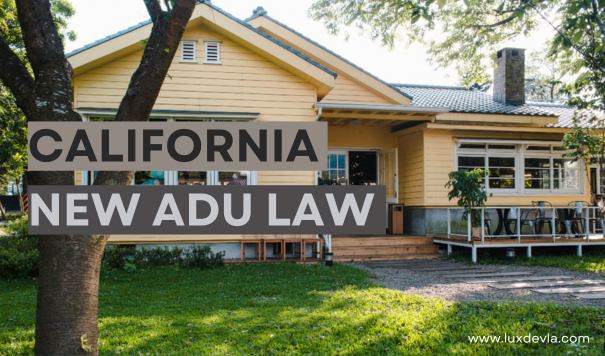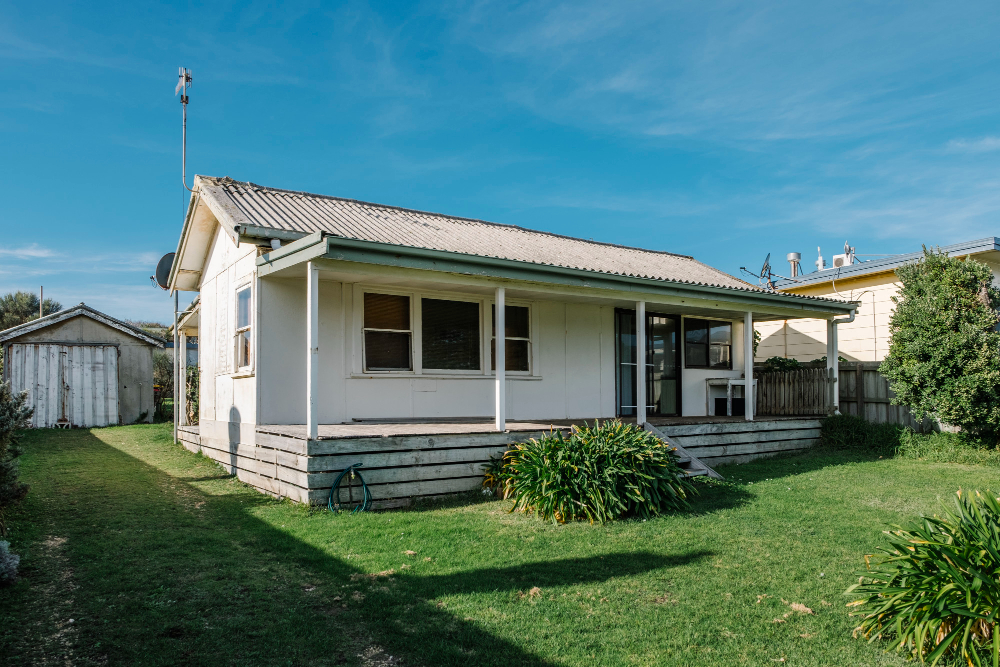California’s housing crisis continues to evolve, and one of the most promising solutions has been the expansion of Accessory Dwelling Units (ADUs). These smaller, secondary homes can be built alongside the primary dwelling on residential properties. With the state’s increasing demand for housing, ADUs have become an attractive option for homeowners, developers, and investors alike.
California’s ADU laws have undergone significant updates in 2024, offering more flexibility for property owners. These changes provide new opportunities to increase housing supply, boost property values, and support affordable rental housing across the state. Understanding the current landscape is crucial for anyone involved in the real estate, development, or housing sectors.
Let’s explore the details of the new California ADU 2024 Law, what they mean for you, and how you can benefit from them.
Contents
- Introduction to California ADU Law
- Key Highlights of the California ADU Law Government Codes – California ADU Law Changes 2024-2025
- AB 1033 – Separate Sale of ADUs
- AB 976 – Owner-Occupancy Prohibition Extended
- AB 434 – Pre-Approved ADU Plans
- AB 1332 – Pre-Approved ADU Plans
- Recap of Laws that Took Effect in January 2023
- Recap of Laws That Went Into Effect in January 2022
- More Highlights of California’s 2024 ADU Laws
- What is the new California ADU Law?
- What Does AB 68 Require Cities to Approve?
- ADU Laws Prohibit Other Restrictions
- Impacts of the 2024 ADU Laws on Homeowners and Developers
- Local Regulations and Legal Considerations
- What Should You Do Next?
Introduction to California ADU Law
An Accessory Dwelling Unit (ADU) is a secondary living space built on the same lot as a primary residence. These units can take various forms, such as granny flats, in-law suites, or converted garages. They have gained significant popularity due to their ability to help alleviate California’s housing shortage.
For homeowners, ADUs offer the chance to:
- Increase property value by adding extra living space.
- Facilitate multigenerational living, where extended families can live together while maintaining independence.
- Generate rental income by leasing the ADU, the main residence, or both.
With the housing market in California still under strain, ADUs provide a solution by offering additional housing units in established neighborhoods. However, the legal framework surrounding ADUs has been complex and continually evolving. Understanding the latest updates is essential for homeowners, developers, and investors looking to exploit this growing trend.
Key Highlights of the California ADU Law Government Codes – California ADU Law Changes 2024-2025
The California ADU laws that took effect in January 2024 aim to further simplify the process for homeowners, investors, and developers. These laws not only make it easier to build ADUs but also introduce groundbreaking provisions for their sale and occupancy.
Here are the key updates:
AB 1033 – Separate Sale of ADUs
One of the most significant changes in 2024 comes from Assembly Bill 1033 (AB 1033), which allows ADUs to be sold separately from the primary residence. Previously, the sale of an ADU was highly restricted and could only occur under limited circumstances. AB 1033 removes these state-level restrictions, enabling local governments to permit the sale of ADUs as independent condominium units.
- Who Benefits? Homeowners can convert their ADUs into condominiums and sell them independently, unlocking significant financial opportunities.
- What’s Required? Approval from the California Department of Real Estate (DRE) and potentially establishing a Homeowners Association (HOA) to manage shared spaces.
Additionally, if an ADU is part of a Homeowner’s Association (HOA), it must comply with the HOA’s governing documents, the Davis-Stirling Act, and the Subdivision Map Act. HOA consent and lienholder approval are required for ADUs to be sold separately.
AB 976 – Owner-Occupancy Prohibition Extended
Under the previous AB 881, passed in 2020, California imposed a sunset provision requiring property owners to live on-site if they built an ADU. This provision was set to expire in 2025, but AB 976 removes the expiration date, permanently eliminating the owner-occupancy requirement for ADUs.
- Benefit: This move encourages the development of rental ADUs, which can help alleviate the state’s ongoing rental housing shortage by allowing property owners to rent out both the ADU and the primary residence without living on-site.
AB 434 – Pre-Approved ADU Plans
All California cities and municipalities must have pre-approved ADU plans to streamline ADU construction by January 1, 2025. This measure reduces processing times and simplifies the design phase.
- How It Works: Architects submit plans for approval, which can be reused for future projects.
- Fees: Some cities may charge for accessing these plans or modifications specific to individual properties.
AB 1332 – Pre-Approved ADU Plans
Another major update is Assembly Bill 1332 (AB 1332), which requires all cities and municipalities in California to provide pre-approved ADU plans by January 1, 2025. This will allow homeowners to streamline the approval process using a standard set of plans that local agencies have already approved.
- Timeline: Once pre-approved plans are available, local agencies must approve or deny an ADU application within 30 days of receiving a completed application.
- Benefit: This change will drastically reduce the time and cost involved in the approval process, making it easier and faster to build ADUs.
Recap of Laws that Took Effect in January 2023
Let’s break down some of the key changes to California’s ADU laws that went into effect in January 2023:
Changes to the 60-Day Rule:
Assembly Bill 2221 (AB 2221) now requires all agencies reviewing ADU plans, including city planning departments and utility companies, to respond within 60 days of receiving the plans. This change speeds up the process, helping homeowners get through the approval steps much faster.
Revised ADU Height Restrictions:
AB 2221 also updated the rules about how tall ADUs can be. Here’s a quick rundown:
- 16 feet: ADUs can be up to this height in any case.
- 18 feet: ADUs can reach this height if they’re within ½ mile of public transit or if there’s already a two-story multi-family dwelling on the property.
- 25 feet: This height is allowed if the ADU is attached to the main house, depending on the property’s zoning code (the lowest limit will apply).
Changes to Setback Rules
Setbacks are the required distances between a building and the property line. California used to require larger setbacks, but now, if your ADU is less than 800 square feet, the front setback rule won’t prevent you from building. This makes fitting an ADU into your property’s available space easier.
Unpermitted Structures and Violations
Senate Bill 897 (SB 897) removed some restrictions that used to hold up ADU development. Before SB 897, if a property had unpermitted structures or zoning violations, the homeowner had to fix them before getting an ADU permit, which slowed things down and made building more expensive. These issues don’t need to be fixed unless they relate to health or safety.
Fire Sprinkler Requirements
Thanks to SB 897, you no longer need to install fire sprinklers in the main house when applying for an ADU permit. This change can save homeowners time and money when building their ADU.
Other Changes Worth Mentioning
- Attached Junior ADUs (JADUs): If your ADU is attached to the main house, it doesn’t need a bathroom as long as there’s one available in the main dwelling.
- Demolition Permits: You can no longer be blocked from getting a demolition permit if you already have an ADU permit.
- California ADU Fund: This new fund was created to help provide financial assistance to people building ADUs.
These changes make it easier and faster to build ADUs in California, which is a big win for homeowners looking to add extra living space or rental units to their properties.
Recap of Laws That Went Into Effect in January 2022
One of the key laws that took effect in January 2022 is Senate Bill 9 (SB 9). This law makes it easier for homeowners to build duplexes or split their property into two separate lots. Here’s a simple breakdown of what SB 9 allows:
- Duplexes on Single Homes: If you own a home and meet certain rules, you can convert your home into a duplex. This means turning one house into two separate living spaces.
- Lot Splits: SB 9 lets you split your property into two lots. You could then build a duplex on each lot, but there’s a catch: you must have lived in the original home as your primary residence for at least three years.
Here are the important things to know about SB 9:
- Residential Only: These projects must be for residential use, meaning no businesses or commercial buildings.
- Location Requirements: The property needs to be in an urban area, not near farms, historic sites, or places with high fire risks.
- Parking Rules: You must provide parking unless your property is within half a mile of public transportation.
- Short-Term Rentals: The project may need to follow local rules if you want to rent the property for short stays, like Airbnb.
- Connected Units: A duplex is possible, but it must meet all building safety codes.
- Lot Splitting Rules: The new lot sizes must meet local rules if you split your lot. Also, the lot cannot be next to another split under SB 9.
- Easements: If you split the lot, the city or county may have easements or special rules that you’ll need to follow.
More Highlights of California’s 2024 ADU Laws
Here’s some exciting news for homeowners and landlords: Assembly Bill 68 allows you to add up to two more units—an ADU and a Junior ADU (JADU)—to any residential lot. You can turn your property into a triplex (three units on one lot) as long as your property meets the size and setback requirements.
The law lets you take things further if you own a multifamily building, like an apartment complex. Non-livable spaces like attics, basements, and garages can now be legally converted into additional units.
What is the new California ADU Law?
With AB 68 coming into effect from 2024 onwards, landlords can now add two more units to their existing lot. California ADU size limit, according to the new law, is that single-family lots can build an attached or detached ADU up to 1200 square feet and a Junior ADU up to 500 square feet.
What Does AB 68 Require Cities to Approve?
Here’s a breakdown of what’s allowed under the new rules:
For Single-Family Homes:
- One ADU (up to 1,200 sq. ft.) and one Junior ADU (no bigger than 500 sq. ft.) are within the existing house.
- One detached ADU (up to 1,200 sq. ft.) could be new construction, built on the same footprint as an old structure, or from a converted existing building.
For Multifamily Buildings:
- Multiple ADUs within the existing structure (like converting storage rooms, basements, or other unused spaces).
- Two detached ADUs on the lot, separate from the main building.
These changes open a world of possibilities for adding value to your property and increasing California’s housing options!
ADU Laws Prohibit Other Restrictions
California’s 2024 ADU updates are all about breaking down barriers and making it easier for homeowners to get their plans approved. To ensure that happens, there are certain restrictions that local governments and HOAs aren’t allowed to enforce. Here’s what they can’t do:
- No Lot Size or Coverage Rules: Local laws can’t require a specific lot size or limit how much of your property an ADU can cover.
- No Replacement Parking: If you’re converting a garage, carport, or any covered parking into an ADU—or demolishing it to build one—you don’t have to worry about replacing that parking space.
- HOAs Can’t Block ADUs: Homeowners’ associations cannot outright ban or impose unreasonable restrictions on building an ADU on single-family lots.
- No Impact Fees for Small ADUs: Local agencies can’t charge you impact fees if your ADU is 750 sq. ft. or smaller.
These rules simplify the process and give homeowners more freedom to maximize their properties.
Impacts of the 2024 ADU Laws on Homeowners and Developers
The new ADU laws have broad implications for various stakeholders:
- For Homeowners: Homeowners can now build ADUs without worrying about owner-occupancy rules, and in the future, they’ll be able to sell ADUs separately from their primary homes. This allows for greater flexibility and potential revenue from the ADU unit.
- For Developers and Investors: Developers and investors can utilize pre-approved ADU plans, simplifying construction and speeding up timelines. The ability to sell ADUs as independent units under AB 1033 also opens up new investment opportunities.
- For Renters and the Housing Market: The flexibility to rent out ADUs and construct more units across the state will help address California’s housing shortage by offering more affordable rental options.
Local Regulations and Legal Considerations
While the state has provided a clear legal framework for ADUs, much of the implementation happens locally. This means homeowners, developers, and investors must understand the specific regulations and requirements of the city or county where the ADU project is located.
For example, some municipalities may have stricter zoning regulations, different fees, or other requirements not covered by state law. Working with licensed architects and legal professionals is crucial for meeting all local and state regulations.
What Should You Do Next?
The 2024 ADU laws have extensive fine print, and local governments will likely add their interpretations. Working with a general contractor who understands these new regulations is crucial.
California’s 2024 ADU laws mark an exciting new chapter in its efforts to address its housing crisis. These updates give homeowners, developers, and investors more opportunities to create housing units, generate rental income, and sell ADUs as independent properties. The new laws encourage greater ADU development by using pre-approved plans and removing owner-occupancy restrictions.
Whether you’re a homeowner looking to build an ADU for personal use or a developer seeking new opportunities, these changes make it easier to understand the ADU process. However, local regulations still play a significant role in approving and constructing ADUs. So, staying informed and consulting professionals when planning your project is essential.
That’s where LUX Construction Group comes in! We’re a full-service contractor firm with a team of experienced, licensed architects who specialize in both new ADU designs and ADU conversions. Our process is straightforward—we offer transparent pricing and can quickly get started on your floor plan and permits. Contact us today!







